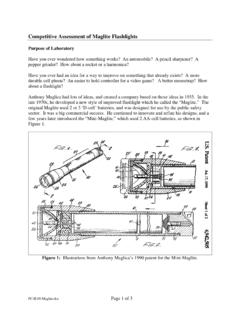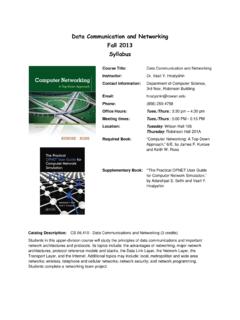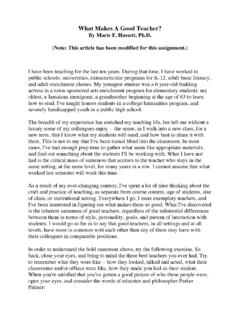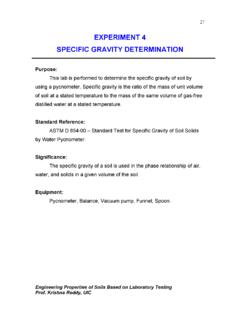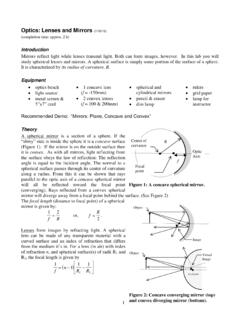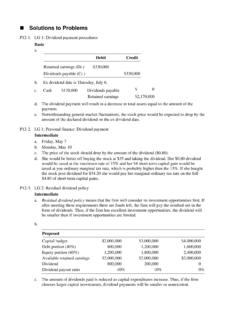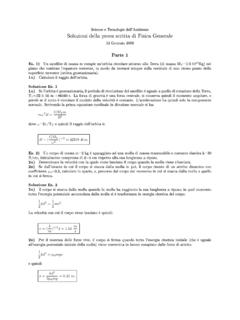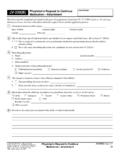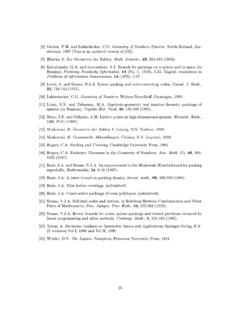Transcription of Real Analysis I Some Examples 1. Prove that A B C)=(A B A ...
1 Real Analysis I Some thatA (B C)=(A B) (A C)Proof:We will show that (i)A (B C) (A B) (A C) and (ii) (A B) (A C) A (B C).To Prove (i), letx A (B C). Thenx Aandx B C. (Why?) Thusx Aandx Borx C.(Why?)Hencex Aandx Borx Aandx C. In other words, we havex A Borx A C. Therefore,x (A B) (A C), that isA (B C) (A B) (A C).Please Prove (ii) in a similar manner. Also show thatA (B C)=(A B) (A C) or give a counter )A B=B is false. Here is one counter example. LetA={1,3,a}andB={1,2,3}. ThenA B={a}whileB A={2}. ( Can you find another counter example)b) (A B) C=A (B C).This is false. Let A and B be as above andC= =The empty set. Then (A B) C=A B={1,2,3,a}whileA (B C)=A B={3}.Can you give different example in whichCis ) (A B) A= is also false. For a counter example letAandBbe as in (a) above. Explain why the statement is ) IfA CandB C, thenA B is true and here is why. AssumeA CandB C. Letx (A B).Thenx Aorx Athenx C.(Why?) Ifx/ Athenx B.
2 But thenx C. Thus in either cases, we see thatx C. Therefore,wheneverx (A B), thenx Cand henceA B )A Bif and only ifA B= is true. Note that there are two things we must show:(i) AssumingA B, we must showA B=Band (ii) assumingA B=B, we must showA us Prove (i). AssumeA B. Letx A B. Thenx Aorx A, then sinceA B,wemustx A, then by the definition of union,x B. In either cases, we havex B. ThusA B other hand, ifx B, thenx A B.(This is true whetherAis a subset ofBor not!) HenceB A , we haveA B= Prove (ii), assumeA B=B. We want to showA B. We will use proof by contradiction. (Youshould give direct proof!) IfA6 B, then there an elementx Abutx/ B. Sincex A, we must havex A B. Thus this elementxbelongs toA Bbut does not belong toB. Therefore,A BandBcannotbe equal. This contradicts the thatS={1/4,1/8,1/12,1/16, }is countable by exhibiting a bijection fromSon :Definef:N Sbyf(n)=1 definition ofSfis onto. To show thatfis one-to-one,supposef(n)=f(m).
3 Then 1/4n=1/4mand hencem=n. Thusfis one-to-one. Thereforefis bothone-to-one and onto. By definition of countability, we see thatSis the Principle of Mathematical Induction to show that nk=1(2k 1)2=4n3 n3for alln :Step 1. Then the left hand side is 1k=1(2k 1)2=12= 1 and the right hand side is(4n3 n)/3 = (412 1)/3= the statement is true forn= nk=1(2k 1)2=4n3 n3is true for somen 1. We need to show that n+1k=1(2k 1)2=4(n+1)3 (n+1)3. We begin with the left hand side and use the assumption: (Make sure that you fill in thereason(s) for each equality.)n+1 k=1(2k 1)2=n k=1(2k 1)2+ (2(n+1) 1)2(Why?)=4n3 n3+(2n+1)2(Why?)=4n3 n3+4n2+4n+1 =4n3+12n2+11n+33(Why?)On the other hand,4(n+1)3 (n+1)3=4(n3+3n2+3n+1) n 13=4(n3+12n2+11n+ , n+1k=1(2k 1)2=4(n+1)3 (n+1)3is true whenever nk=1(2k 1)2=4n3 n3. By the Principle of Mathe-matical Induction, the formula holds for all positive that there is a rational number between any two given real numbers.)
4 Use this assumption toprove that any nonempty open interval (a,b) contains an infinite number of rational :By assumption there is a rational number, call ity, betweenaandb. Note thata<y. But thenaandyare real numbers and the assumption we are making guarantees the existence of a rational number,sayx0, rational numbers betweenaandb. Then the midpoint ofx0andy, call itx1is a rational point betweenaandb. Clearlyx06=x1. Letx2be the midpoint ofx0andx2,x3be the midpoint ofx1andx2, and so on. Thusxnis the midpoint ofxn 1andxn 2for eachn>2. The set{x1,x2,x3, }is an infinite set of rational numbers betweenaandb. (Can you rewrite this proof to make itshorter?) ,b,c,dare positive real numbers such thata/b<c/d, then show thatab<a+cb+d< :Sincebanddare positive, we can multiplya/b<c/dto obtainad bc<0 and hencebc ad>0.(Can you think of which properties we have used? But then we havea+cb+d ab=bc adb(b+d)>0.(Here we used algerba!)Thusab<a+cb+ the other inequality.)
